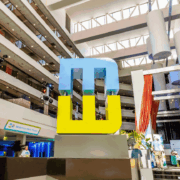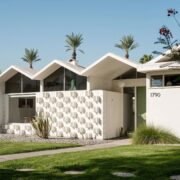Le Corbusier’s colorful Marseille multistory villa created the blueprint for the modern mixed-use development
Marseille, one of the stops on this fall’s ModernismWeek@Sea setting sail this September 2024, is the home of Le Corbusier’s colorful Cité Radieuse. This UNESCO World Heritage Site is renowned not only for its modern, modular construction, but for its radical idea of weaving an entire range of amenities, ranging from a nursery school and gym, to a theatre, grocery stores and cafes, into the site to encourage interaction between its residents.

France’s second most populous city had sustained heavy damage during World War II and was in desperate need of housing. Raoul Dautry, the country’s Minister of Reconstruction, turned to Charles-Eduoard Jeanneret for help. More familiarly known as Le Corbusier — a moniker he’d culled from his maternal grandfather’s surname and adopted as he set about reinventing himself as a leader in design and urban planning — the self-taught Swiss-born French architect presented a plan for a housing development that built on the ideas that he’d been exploring and championing throughout his career.
Riffing off his theory that “a house should be a machine for living,” and that the goal of architecture was “to bring order to function and objects,” he had long espoused the idea of a self-contained development that would uphold the social order. Constructing it from reinforced concrete, a material that had long captured his attention, would allow for the creation of an inexpensive, adaptable structure.

He conceived of his “vertical garden city” as a building centered within a small park and surrounded by trees. A reinforced-concrete framework, upheld by massive concrete pylons, would allow for the creation of 337 modular duplexes with terraces on either side that would be offered in a choice of 23 different configurations. They’d be fully furnished — though residents could chose the interior color. Woven within the imposing concrete structure were shops, restaurants, cafes, offices, medical offices, a hotel and a library. There was a theatre. The roof showcased its communal spaces: a nursery school, a gym, a running track and a pool.
Though it was the focus of much derision and criticism throughout its five year construction and after its unveiling, its success — and its eventual designation as UNESCO World Heritage Site — validate the prescience of Le Corbusier’s ideas and underscore his place in the canon of architects.






